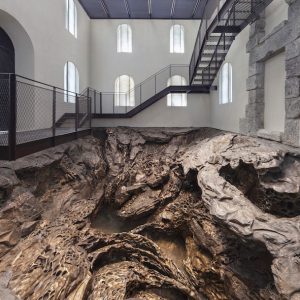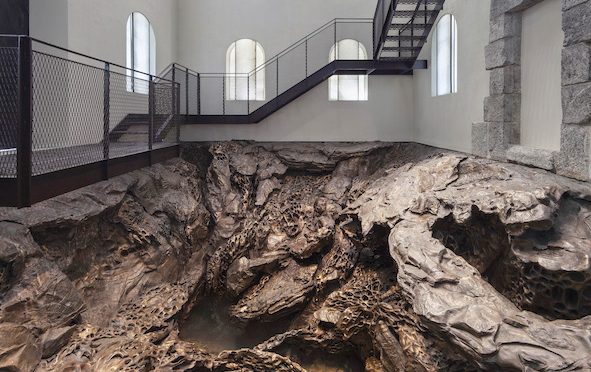Donostia, the capital of Gipuzkoa, is a city filled with a myriad of things to see and do. From the Parte Vieja, where one can wander all night sampling pintxos, to the wonderful beaches, to the history of the San Telmo museum, there is so much to do. And, thanks to Cristina Iglesias, a sculptor native to the city, there is one more attraction that will certainly become a must-see on any visit to the city: Hondalea.

- Cristina was born on November 8, 1956, in Donostia to Eduardo Iglesias Hernández and Maritxu Fernández-Berridi Lecuona. Cristina is one of five children, all of whom became artists and creators of one type or another. She began studies at the University of the Basque Country in chemical sciences, but began down a path of art that took her to the Chelsea College of Arts in London.
- Cristina’s career grew in the 1980s and really took off in the 1990s. Her first solo exhibition was in Portugal in 1984 but this was soon followed by exhibitions across Europe, in Vienna, Bordeaux, Athens, Dusseldorf, and Ghent. The 1990s saw her reach across the ocean with exhibitions in Canada, the United States, and Australia. In 1999, she was awarded the Premio Nacional de Artes Plásticas, for having opened new paths in the plastic arts (sculpture for example). That year, she also created special pieces designed for the Guggenheim Museum in Bilbao. Today, her work can be found in some of the most prestigious museums in the world, including the MACBA (Barcelona), the Tate Gallery (London), the Reina Sofía Art Center (Madrid), and the MoMA and the Solomon R. Guggenheim Museums (New York). In 2016, she was awarded Donostia’s Tambor de Oro. And, in 2020, she won the Royal Academy Architecture Prize in London for looking “at the spaces between buildings, creating thoughtful work that rewards sustained reflection.”
- Her work incorporates multiple materials, fusing the industrial and organic. She explores our relationships with both nature and space. One of her works, Deep Fountain, looks almost like a marsh with organic green leaves that cover the bottom of a pool. As the pool fills from a crack, or abyss, in the center, the water slowly flows over the sculpted leaves.
- With her most recent work, entitled Hondalea (Marine Abyss in Basque; check out the video, the photo doesn’t do it justice) and unveiled in June 2, 2021, Cristina has converted an abandoned lighthouse on the Basque coast into a kinetic water sculpture. The lighthouse, on Santa Klara Island in the middle of Donostia’s bay, has been completely transformed. The bottom was excavated and replaced with bronze sculpture that mimics the rugged Basque coastline. Water flows in and out, driving by hydraulics, that mimic the crashing of the waves. All of this is surrounded by the walls of the lighthouse itself.
Primary sources: Cristina Iglesias, Biografias y Vidas; Cristina Iglesias, Wikipedia; Cristina Iglesias, Guggenheim Bilbao; Barandiaran Múgica, Arantza. Iglesias, Cristina. Enciclopedia Auñamendi. Available at: https://aunamendi.eusko-ikaskuntza.eus/es/iglesias-cristina/ar-52092/; Harriet Lloyd-Smith, Cristina Iglesias turns derelict lighthouse into staggering geological sculpture, Wallpaper*.
If you get this post via email, the return-to address goes no where, so please write blas@buber.net if you want to get in touch with me.
Discover more from Buber's Basque Page
Subscribe to get the latest posts sent to your email.


